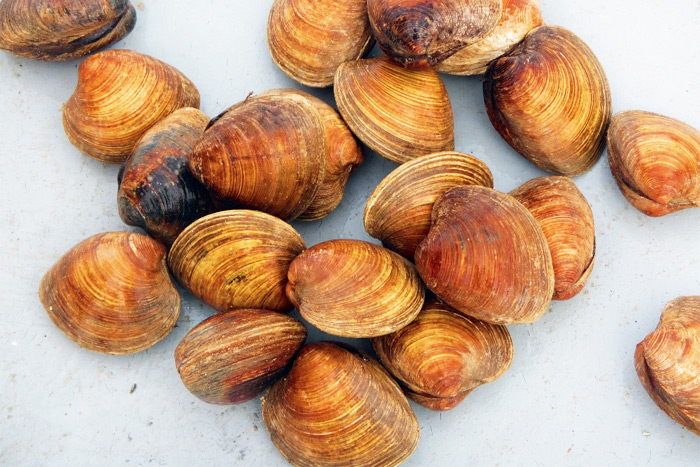Shinnecock Bay Clams Up as Decade of Restoration Efforts Succeed

The number of clams in Shinnecock Bay has increased 1,700%, seagrass meadows have grown more than 400,000 square meters and brown tides have ceased over the past decade, researchers found.
The findings were detailed in a peer-reviewed study that documents a 10-year restoration effort published in the international journal Frontiers in Marine Science.
“99.5 percent. Sometimes numbers are used as hyperbole, but that is how much the landings of hard clams had declined from the 1970s to 2011 in Shinnecock Bay,” said Stony Brook University Professor of Marine Science Chris Gobler, the lead author of the study.
He explained how critical clams are at filtering excess algae from the waterway that causes brown tides. The algae blooms are fueled by nitrogen pollutants seeping into the water from human activity.
“These bivalves are known as ecosystem engineers since their ability to filter feed can remove algae, improve water clarity, and have downstream effects on habitats like seagrass meadows that need clear water to thrive,” he said. “When an estuary experiences a loss of filter-feeding bivalves, the ecosystem-wide effects can be enormous. We knew that a key to recovering this ecosystem would be to re-establish the hard clam population.”
Scientists discovered that a lack of adult clams made the odds of successful reproduction for these broadcast spawning individuals exceedingly low, so they created hard clam spawner sanctuaries.
“The spawner sanctuaries amounted to Goldilocks zones,” he said. ‘They were far away enough from ocean inlets so the spawn or larvae would not be flushed into the Atlantic Ocean, but not so far away from clean ocean water that the adult clams would perish due to poor water quality.”



